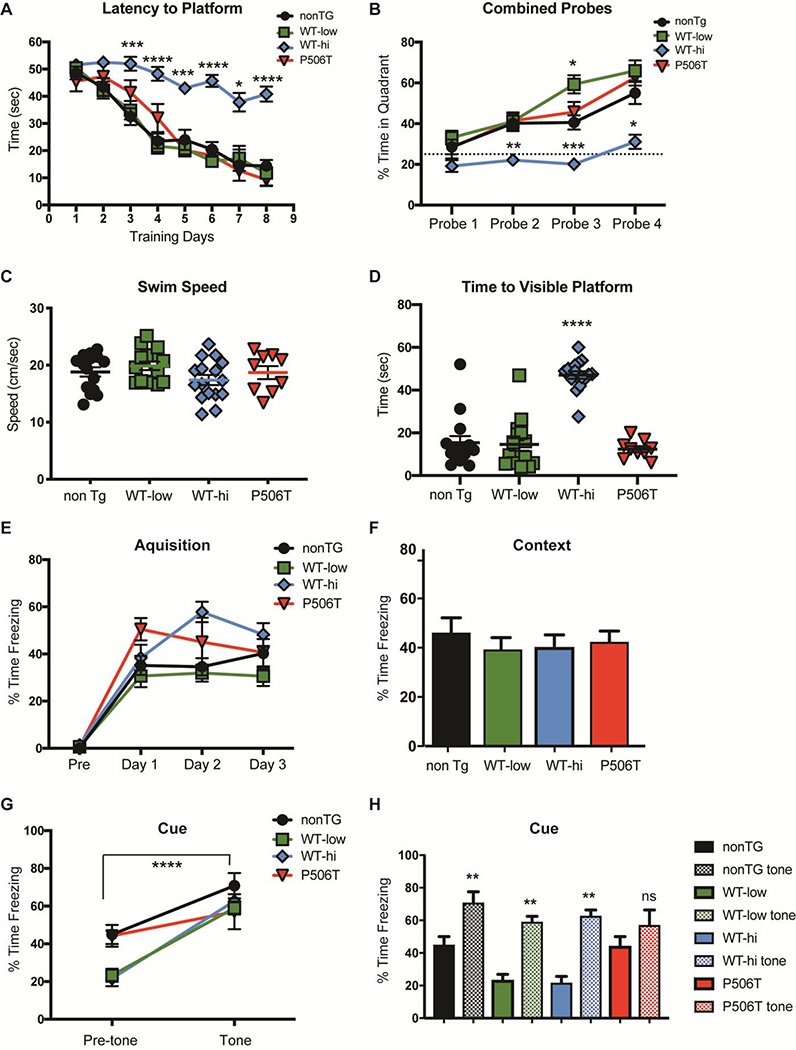Figure 5. WT-hi mice are significantly impaired in the Morris water maze, but fear conditioning is not altered in WT- or P506T-UBQLN2 transgenic mice.
A. Time to reach the hidden platform (latency) was significantly increased in WT-hi mice compared to all other genotypes. Mice were trained for six trials a day for 8 d.
B. In 60-sec probe trials 2–4 (indicated by black arrows in panel A) only WT-hi mice failed to spend more time in the quadrant where the platform was previously located (Q4). The dashed line (25%) represents random or “chance” performance.
C. Swim speeds were unchanged among transgenic mice compared in nonTG mice.
D. Average escape latencies for WT-low and P506T mice recorded during the visible platform version of the Morris water maze. WT-hi mice escape latencies were markedly increased over all other genotypes suggesting an impairment in finding the marked platform, which is independent of hippocampal function.
E. Mice were fear-conditioned with three tone-footshock pairings per day for 3 d. Similar increases in percent time freezing over the days of training show normal acquisition in all mice.
F. 24 hr after the last training day, mice were tested for their contextual fear memory. Mice of all genotypes exhibited a similar increase in freezing to the context as nonTg mice.
G, H. 24 hr after the context test, mice were tested for cued fear memory. Mice were placed in a novel environment and exposed to the tone alone. WT-low and WT-hi displayed a significant increase infreezing similar to nonTg mice, whereas P506T mice did not show statistically increased freezing. Bar graph representations of changes in post- versus pre-tone freezing are shown in H.
For all graphs * = P > 0.05, ** = P > 0.01, *** = P<0.001, **** = P<0.0001. Error bars = ± SEM.

